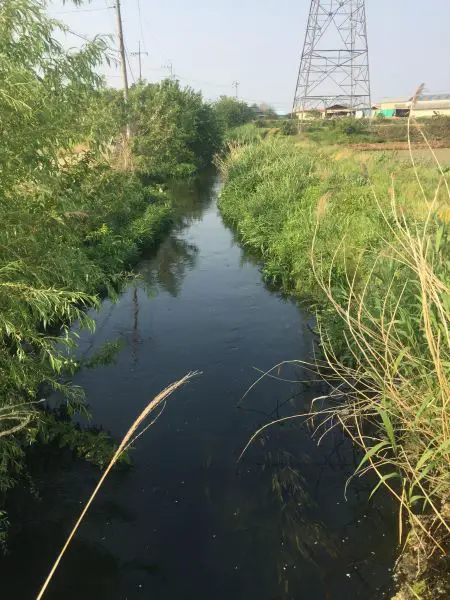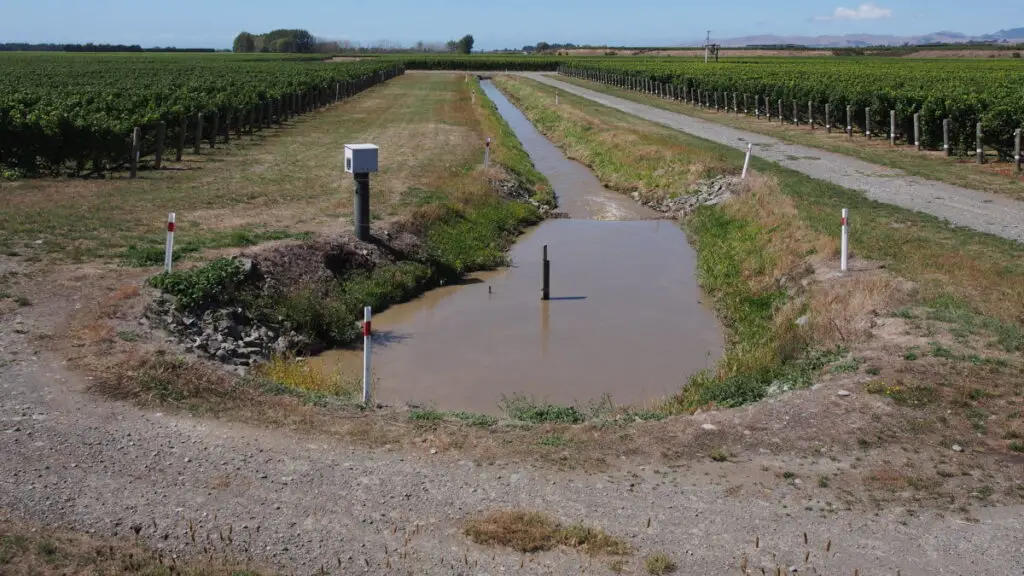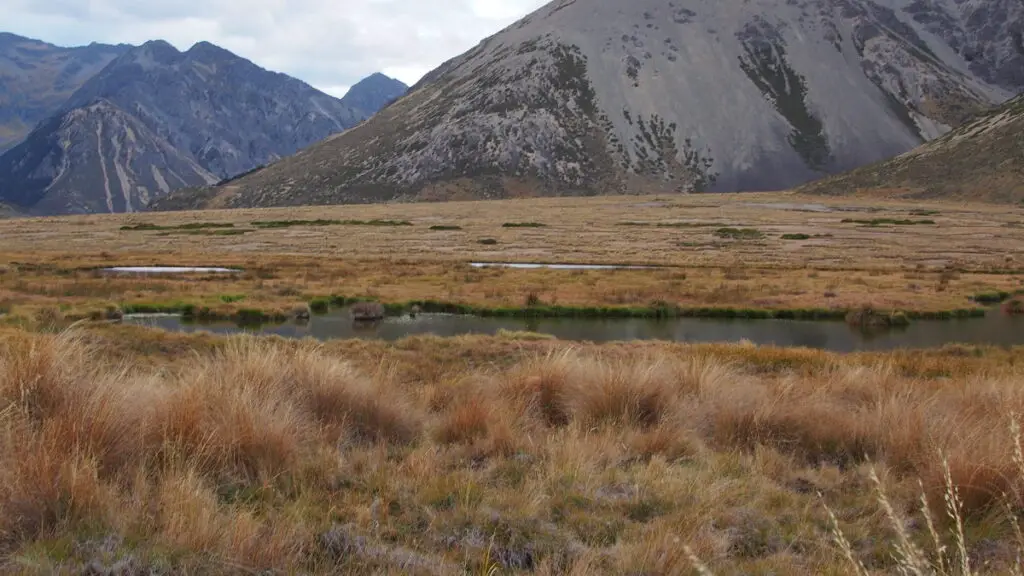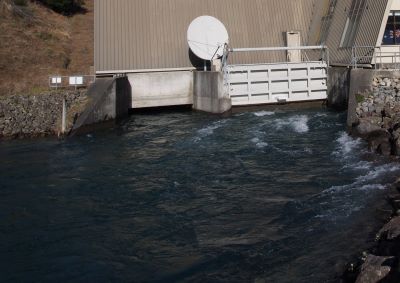Welcome, this is just a fun article describing some of the more strange places trout can be caught. I am not saying these are the best trout fishing locations but they do offer a change in environment and at times surprisingly good fishing.
I also will note, that for these locations to hold trout, the surrounding rivers and streams also need to be suitable for holding trout.
So let’s forget about freestone rivers, spring creeks, and cold water ponds and discuss some others places where trout live.
1) Rural ditches
I never really thought drains and ditches could hold trout. They are typically only a couple of feet wide, and usually contain more weeds and vegetation growth than water.
That was until I got talking to an environmental scientist, who has been electrofishing ditches to find out what fish life actually inhabits them. To his surprise, on one trip out of the tangled mess of grass and waterweeds floated a nice 25 inch trout.
Why would such a trout be living in a ditch? I can only guess that there was a lot of potential prey, plus all the weed provides excellent cover.
Do I recommend, walking along ditches with the fishing rod? Well, they can be very challenging to fish due to all of the weeds and constant snags. Even when a trout is hooked, they often bury themselves among the weeds making landing difficult.
But such ditches often have their origins in small streams or spring eruption zones which can be more open. Also after heavy rain, the waterfall usually raises making casting much easier. In my experience, they are certainly worth a look.

2) Irrigation canals
I have had some excellent trout fishing in irrigation canals. Yes, they are narrow, fast flowing, and man-made. There is also usually a lack of cover for fish to hide.
But, certain locations along the canals can be very productive. I am talking about three main areas culverts, intakes and finally the outlet.
Culverts usually slow the water and often create a small plunge pool area. Trout just love to feed downstream of the culvert, and when in danger they dart back into the black tunnel. I find the best way to fish a culvert is to slowly feed a lure downstream with the discharge.
Intakes, share a lot in common with culverts, but usually to a much larger scale. Depending on the construction method, there is often a deep pool close to the inlet.
Finally, we have the outlet. That is where the remainder of the water discharges back into the river. Like all tributaries, this is a prime spot for holding fish.

3) Swamps and marshlands
Do swamps or marshes hold trout? Well, if they are close to a trout fishery they certainly can.
I will preface this section by saying, swamps can be very difficult and tiring to fish. The soft, soggy conditions is not fun to walk through, and the disconnected pockets of water are nearly impossible to navigate through on a boat. Then, we have the insects which can be relentless at times.
But swamps, especially if they contain a few pockets of open water can contain surprisingly large trout which rarely, if ever see an angler.
I have fished more than a few swamps in my life, sometimes I end up in them while trying to walk around a lake, other times I enter them just to explore so from first hand experience I know that ponds of water, with no obvious wet connections, can still hold fish. I do not know how the trout get there, maybe they swim in during periods of high water levels or they can push through the reeds.

4) Urban Streams
Clean flowing urban streams in the suburbs can be surprisingly productive trout fisheries. Except for the occasional child, these streams are often overlooked by fishermen. I suspect that is because many of us fish to escape the confines of the city and to enjoy the outdoors.
But in doing so, we are driving past some very productive fisheries right on our doorstep.
One of my favorite trout streams flows right through the middle of my hometown, and I nearly always have it to myself. In the spring, I have even caught trout approaching double figures.
Now, not all urban streams hold trout. The water still needs to be cool and clean. Trout are very susceptible to pollutants and even a small amount can cause fungal infections and death. So if the stream, more resembles an open sewer than a creek it is not going to hold resident trout.
5) Downstream from stocked reservoirs.
It is no secret that many ponds and reservoirs see large numbers of stock trout and happy anglers catching them.
But, they do not catch them all, and in some cases, trout make it out of the reservoirs, down culverts, and over dams into the outlet streams which turn into rather productive little fisheries.
Near where I grew up there was a medium-size flood control dam with quite a large reservoir behind it. The local fish and game, had some fish to spare so they decided to stock it with trout. The shoreline was crowded for the first few days, but within weeks the fishing had slowed and trout were few and far between. Most have been caught.
So I decided to push my way into the overgrown tailwater, which during normal flows, is only fed by a small culvert that dropped several feet into a large plunge pool.
Downstream of the plunge pool I discovered a nice little stream populated with a healthy number of trout enjoying the flowing water. Yes, many of the stocked trout left the reservoir and swam down the ‘waterfall’ and took up residence in the outlet stream.
It was some of the most productive fishing I have had all year and I had the entire place to myself. Several of the trout were still there the following spring, well after everyone else gave up on the reservoir.
6) Off the beach – Blind rivers
This one only works if you have sea (or lake) run trout in your local area.
As the time to spawn approaches, trout are attracted to their home waters, but sometimes due to low flows, their home river is not connected to the sea. But, that does not prevent the trout from trying to enter.
They can sense the river water seeping through the gravel and sand of the beach and it is enough to bring the trout close to shore. The trout gather just offshore searching for the river which does not currently exist.
In the fall, I have caught more than a few trout, and have seen salmon caught off a shingle beach that formed a bar across a river mouth. I can only theorize that they were there waiting for a small flood to open the gravel allowing them to enter the estuary behind.
7) Cave mouths
Trout are not afraid of the dark, and they will happily swim into a cave or underground pipe. That is because caves provide a dark environment for them to hide away in, plus the water is usually a bit cooler.
I have caught more than my fair share of trout casting into the entrance of a cave. I have never been able to explore inside thanks to a metal barrier that blocks the entrance. The trout I have pulled out from the gloom have always been very pale in color. They do not see much sunlight.
I at times have wondered, if it would be possible to catch trout while underground. There has been reports regarding trout living and feeding over a mile underground. For anyone interested in learning more about trout living in caves there is an interesting interview of cave trout expert Graham Proudlove here.
Now, I know not everyone is lucky enough to live in an area with a comprehensive cave network. But the cave does not have to be natural, the discharge point of large underground pipes can also be surprisingly productive. Examples include piped waterways, and in other places the discharge locations of hydroelectric schemes are accessible.
Now, like all trout fishing. The water flowing out of the cave has to be clean. It is very unlikely to find trout hanging out in an untreated sewage discharge pipe. Although, I have caught trout around treated sewage discharge as it poured out into the river.


